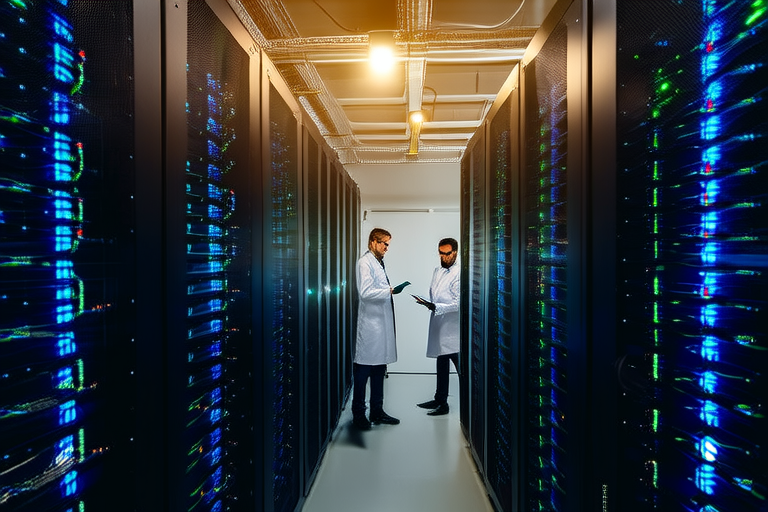“`html
Cloud Computing vs. Edge Computing: Understanding the Key Differences
Introduction
Cloud computing and edge computing are two fundamental technologies that have transformed the way we process and manage data. While both offer powerful solutions for handling large volumes of information, they serve different purposes and cater to distinct needs. Understanding the key differences between these two technologies is crucial for businesses and individuals looking to optimize their IT infrastructure and enhance performance.
This article aims to provide a comprehensive overview of cloud computing and edge computing, highlighting their definitions, functionalities, and applications. By the end of this article, you will have a clear understanding of the advantages and limitations of each technology, enabling you to make informed decisions based on your specific requirements.
What is Cloud Computing?
Cloud computing refers to the delivery of computing services—such as servers, storage, databases, networking, software, and intelligence—over the internet (“the cloud”). Instead of owning and maintaining physical hardware, organizations can access these resources on demand, paying only for what they use.
The primary functions of cloud computing include:
- Data storage and management
- Application deployment and scaling
- Serverless computing
- Big data analytics
In cloud computing, data is processed and stored on remote servers located in data centers around the world. These servers are managed by cloud service providers (CSPs) such as Amazon Web Services (AWS), Microsoft Azure, Google Cloud Platform (GCP), and IBM Cloud. Users can access these services via the internet, making it easier to scale resources up or down based on demand.
Common use cases for cloud computing include:
- Web and mobile application hosting
- Data backup and recovery
- Enterprise resource planning (ERP)
- Customer relationship management (CRM)
What is Edge Computing?
Edge computing involves processing data closer to the source of data generation, typically at the “edge” of the network, rather than sending all data to a centralized cloud server. This approach reduces latency, improves real-time processing, and conserves bandwidth.
The primary functions of edge computing include:
- Real-time data analysis
- Reduced dependency on central cloud infrastructure
- Improved security and privacy
- Enhanced IoT device performance
In edge computing, data is processed locally at the source, often through edge devices such as sensors, gateways, or micro-data centers. These devices perform initial processing and filtering of data before sending relevant information to the cloud for further analysis.
Common use cases for edge computing include:
- Industrial automation
- Smart cities
- Autonomous vehicles
- Healthcare monitoring
Key Differences Between Cloud Computing and Edge Computing
Data Processing Location
One of the most significant differences between cloud computing and edge computing lies in where data is processed. In cloud computing, data is sent to remote servers for processing, while in edge computing, data is processed locally at the source.
Latency and Response Time
Cloud computing can introduce latency due to the distance between the data source and the cloud server. In contrast, edge computing reduces latency by processing data closer to the source, resulting in faster response times.
Bandwidth Usage
Cloud computing requires constant data transmission between the source and the cloud, which can lead to high bandwidth usage. Edge computing, on the other hand, filters and processes data locally, reducing the amount of data sent to the cloud and conserving bandwidth.
Scalability and Flexibility
Cloud computing offers excellent scalability and flexibility, allowing organizations to easily adjust resources based on demand. Edge computing, while more limited in terms of scalability, provides greater flexibility in terms of local processing capabilities.
Security and Privacy Considerations
Cloud computing centralizes data, which can increase the risk of data breaches. Edge computing, by processing data locally, enhances security and privacy, especially for sensitive data.
Use Cases for Each Technology
Cloud Computing Use Cases
Cloud computing is ideal for applications that require centralized data management and processing, such as:
- Large-scale data analytics
- Enterprise resource planning (ERP)
- Customer relationship management (CRM)
- Web and mobile application hosting
Edge Computing Use Cases
Edge computing excels in scenarios where real-time processing and low latency are critical, such as:
- Industrial automation
- Smart cities
- Autonomous vehicles
- Healthcare monitoring
Future Trends and Integration
The future of cloud and edge computing looks promising, with both technologies evolving to meet growing demands. Cloud computing is expected to continue expanding its offerings, including enhanced security features, improved scalability, and more robust AI/ML capabilities. Edge computing will likely see advancements in edge device capabilities, increased interoperability, and better integration with cloud services.
Hybrid solutions that combine the strengths of both cloud and edge computing are becoming increasingly popular. For example, edge computing can handle real-time data processing, while cloud computing manages long-term data storage and advanced analytics. This synergy allows organizations to leverage the best of both worlds, optimizing performance and efficiency.
Conclusion
In conclusion, cloud computing and edge computing are complementary technologies that offer unique advantages depending on specific use cases. Cloud computing excels in centralized data management and processing, while edge computing provides real-time processing and reduced latency. By understanding the key differences between these two technologies, organizations can make informed decisions about which solution best meets their needs.
Ultimately, the choice between cloud computing and edge computing—or even a combination of both—depends on factors such as latency requirements, bandwidth constraints, and security considerations. As technology continues to evolve, staying informed about the latest trends and innovations will help ensure that you choose the right solution for your organization’s success.
“`


